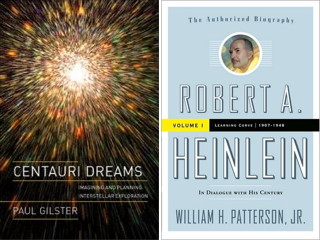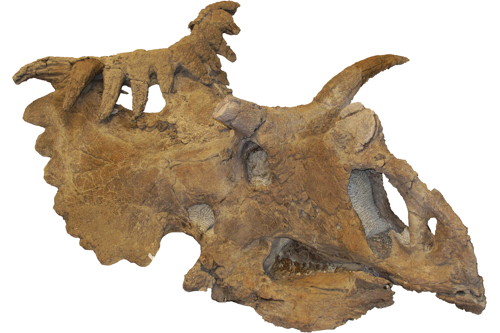 Centauri Dreams: Imagining and Planning Interstellar Exploration by Paul Gilster summarizes the current research and thinking about interstellar travel — the challenge, in a nutshell, is how to send a probe to Alpha Centauri and have it arrive during the lifetime of a single researcher. It’s mostly about propulsion, but also about materials, communications, AI and nanotechnology. Useful stuff for a science fiction writer hoping to bone up on the subject (ahem). Indeed, the book is a lot more SF-friendly than I expected, with references to authors and Analog articles; I suppose I shouldn’t have been surprised. Gilster’s website.
Centauri Dreams: Imagining and Planning Interstellar Exploration by Paul Gilster summarizes the current research and thinking about interstellar travel — the challenge, in a nutshell, is how to send a probe to Alpha Centauri and have it arrive during the lifetime of a single researcher. It’s mostly about propulsion, but also about materials, communications, AI and nanotechnology. Useful stuff for a science fiction writer hoping to bone up on the subject (ahem). Indeed, the book is a lot more SF-friendly than I expected, with references to authors and Analog articles; I suppose I shouldn’t have been surprised. Gilster’s website.
Robert A. Heinlein: In Dialogue with His Century, Volume I, 1907-1948: Learning Curve by William H. Patterson, Jr. First half of the massive bio of science fiction giant Heinlein, who died in 1988. Despite the fact that Heinlein was extremely private — and, we learn, had a lot to be private about — this authorized biography (by his widow, who died in 2003) reveals much that was previously hidden, but is hampered by the fragmentary evidence that survives from the period (Heinlein burned a lot of material relating to his second marriage, for example). Patterson does well as a historian, and the book is gripping and a must-read, but hero-worship is a factor here. See a series of blog posts on Tor.com about Heinlein and this biography.
- Centauri Dreams by Paul Gilster
- Amazon.ca • Amazon.com
- Robert A. Heinlein by William H. Patterson, Jr.
- Amazon.ca • Amazon.com

 Centauri Dreams: Imagining and Planning Interstellar Exploration by Paul Gilster summarizes the current research and thinking about interstellar travel — the challenge, in a nutshell, is how to send a probe to Alpha Centauri and have it arrive during the lifetime of a single researcher. It’s mostly about propulsion, but also about materials, communications, AI and nanotechnology. Useful stuff for a science fiction writer hoping to bone up on the subject (ahem). Indeed, the book is a lot more SF-friendly than I expected, with references to authors and Analog articles; I suppose I shouldn’t have been surprised.
Centauri Dreams: Imagining and Planning Interstellar Exploration by Paul Gilster summarizes the current research and thinking about interstellar travel — the challenge, in a nutshell, is how to send a probe to Alpha Centauri and have it arrive during the lifetime of a single researcher. It’s mostly about propulsion, but also about materials, communications, AI and nanotechnology. Useful stuff for a science fiction writer hoping to bone up on the subject (ahem). Indeed, the book is a lot more SF-friendly than I expected, with references to authors and Analog articles; I suppose I shouldn’t have been surprised.